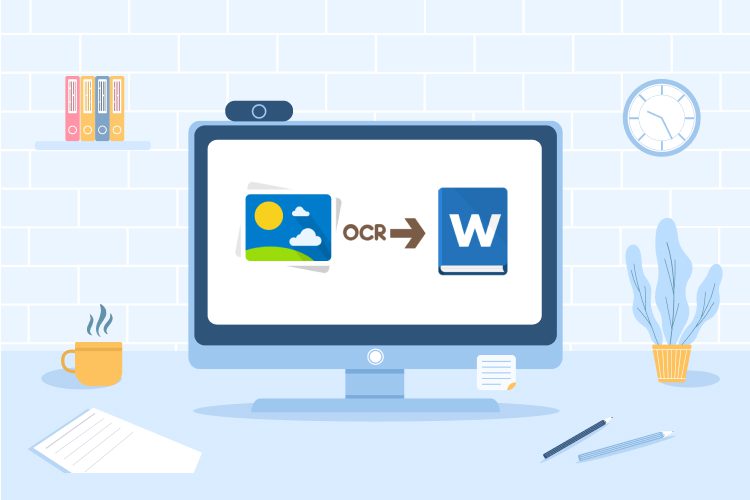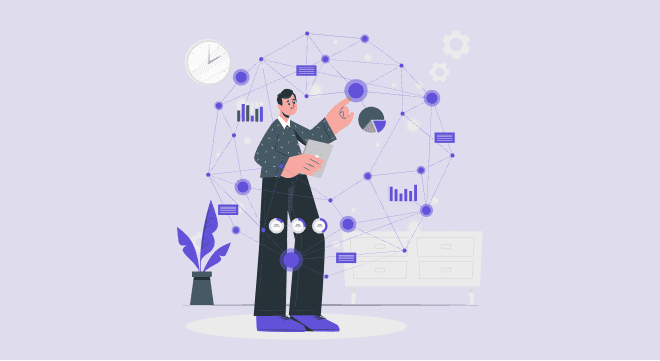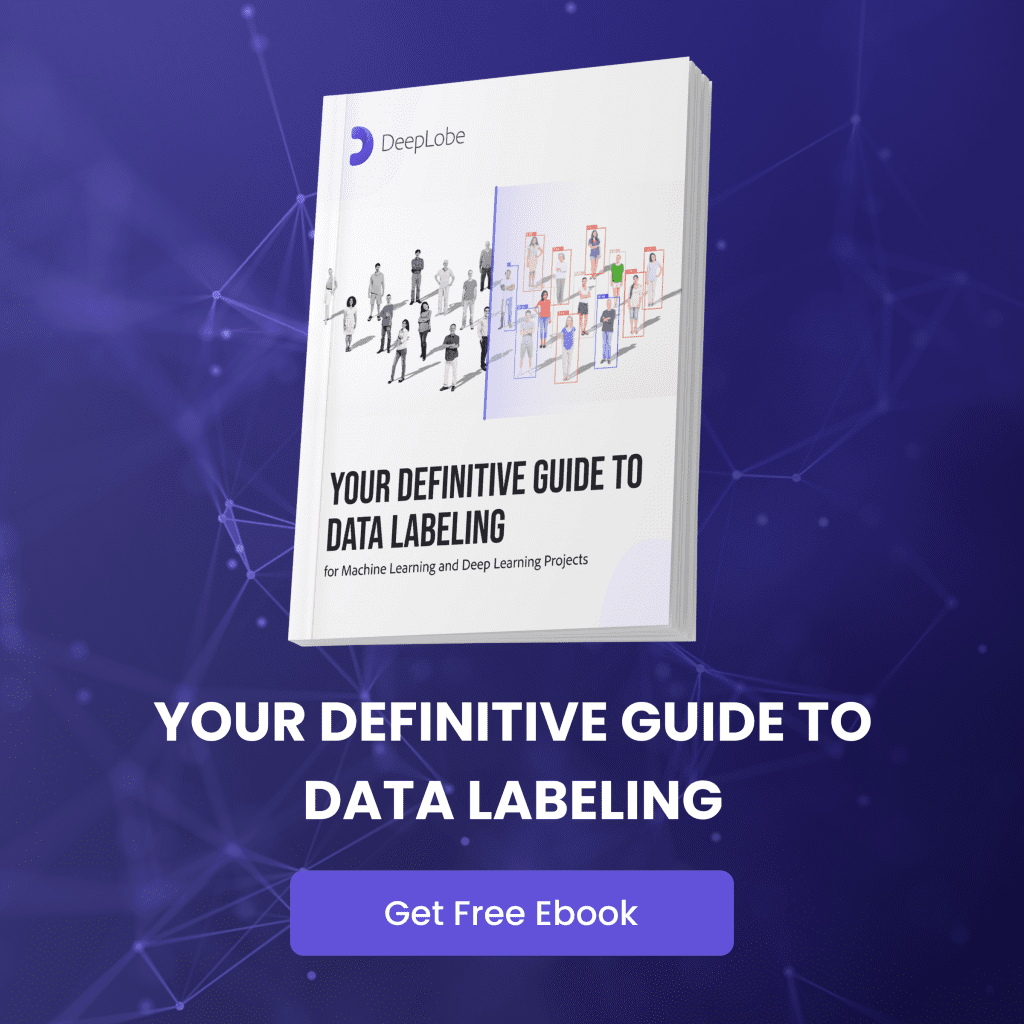
DeepLobeDecember 13, 2020Machine Learning API , Optical Character Recognition
Today we are accessible to a mountain of intelligent technologies. And no doubt that computer vision stores a vital space among all of them. When we talk about computer vision, the foremost application that we think of is Image Recognition. But indeed, a computer vision also encompasses OCR (Optical Character Recognition) algorithm, which allows seamless computer operations. In this article, we will discuss the origin, advancements, OCR tasks, and OCR industry applications that are enriching the OCR Pipeline.
OCR to Computer Vision – The Journey
OCR or Optical Character Recognition is one of the most used applications of computer vision. And this is the reason why OCR has seen more advancements than any other computer vision applications in recent years. The purpose of OCR is to enable a user to convert different types of documents, like scanned paper documents, PDF files, text on images, or any other captured data into editable and searchable data.
Gentle Introduction
OCR is one of the earliest applications of computer vision tasks. Earlier, applications of OCR aggressively focused on developing telegraphy and creating reading devices for the blind. Dated back in 1914, Emanuel Goldberg invented the machine that reads characters and converts them into standard telegraph code. And from then, the evolution of OCR has seen numerous advancements. Some of the historical accolades in the OCR progression journey are: 1974, Ray Kurzweil invented the CCD flatbed scanner and the text-to-speech synthesis machine which today acquired by company Xerox, and Tesseract another application, which leverages OCR to output the analyzed text into plain text, PDF, and HTML format.
Whether converting handwritten scans into machine-encoded text or automated data-entry tasks, OCR is applicable everywhere. The recent improvements are widening the scope of OCR algorithms and helping government, people, and businesses in translating critical data into digital forms.

OCR using Computer Vision and Deep Learning
OCR is a well-researched area in the field of Deep Learning. Indulging the state-of-art deep learning algorithms signals a new wave of the modern enterprise. And in the age of data digitization, deep learning, and computer vision, advancements in OCR promote automation and taking AI capabilities to the next level. By using deep learning models, computers will be seamlessly able to collect, recognize, and classify the data.
Tasks performed using OCR
We know OCR is performed to recognize the text from an image. It is mostly a two-step process. First, detecting the text that appears in the image (may it be a printed document or A text in the wild). Second, leveraging the available set of solutions (it can be classic computer vision applications, state-of-art deep learning techniques, or standard Deep Learning approach). Furthermore, we have described a few data sets/tasks to help us in understanding, in what forms OCR can be implied.
SVHN
SVHN (Street View House Number) data-set of house numbers extracted from google street view. The images extracted from google hold the house numbers in all shapes and writing styles, and most of the house numbers are located in the middle of the image. The task difficulty is intermediate.
License Plates
Detecting the digits from the license plate and then recognizing its characters is one most common and booming applications of OCR. The practices of license plate recognition transforming and automating the transit system and helping the governments in better security and compliance.
CAPTCHA
Maintaining security across the web is one of the critical challenges. CAPTCHA is a common practice to distinguish robots from real humans. Vision tasks, especially text reading, are random and distorted, which is hard for a computer to read. And it’s where OCR comes into play.
PDF OCR
The most used application of OCR is reading text from printed documents/OCR pdf. For instance, Tesseract is a commonly used tool to perform this kind of task.
OCR in Wild
OCR in the wild, is one of the challenging OCR applications. To perform these tasks, computer vision uses street view images to extract the text. Coco-text and the SVT data-sets are relevant data sets for this task.
Synth Text
Synth text is a concept to train the OCR model in identifying the text from flat images. Practicing this methodology improves the training efficiency of artificial data generation. The task includes harnessing the depth information of an image. The synth text algorithm takes in mages with the aforementioned annotations, and intelligently sprinkles the words. For better analysis, the models differentiate every image with two mask layers, one of depth and another of segmentation.
Applications of OCR in Real-Time
In recent years the applications of OCR have seen constant growth. And according to Grand View Research, Inc., the global optical character recognition market size is expected to $13.38 billion by 2025. The continuum of growth in the number of enterprises and governments indulging this technology enriches the R&D in building an agile application on the OCR front. And here are a few successful innovations of OCR and computer vision in different industry vertices.
Banking & Insurance
Incorporating the OCR for banking automating loan application, invoice processing, and KYC documentation. OCR being compliant with data protection regulations and ethical laws of banking and financial services, helping the insurance sector in claim management and digital documentation.
Smart Cities
Automatic number plate recognition, license number plate recognition, RFID, and OCR powered smart parking are traditional practices of optical character recognition in smart cities. OCR is helping governments with budget limitations in optimizing, managing, and improving mobility statistics, traffic flows, law enforcement, safety, and security by reducing operating costs. Integrating the vision-tech is optimizing the inhabitant’s experience.
Supply Chain
OCR is mitigating the major supply chain bottlenecks by modernizing the warehouse infrastructure. OCR avoids the need to manually type or enter the text that reduces the pitfalls in current management by boosting productivity. Automating and digitizing the goods receipts, loading/transport information, and goods return management & control are improving the industry deliverables.
Healthcare
In recent times, the eHealth sector is booming. So as the healthcare data. With more patients and clients showing interest in healthcare technology the need for digital tools is compounding. Optical character recognition scanner can recognize alphanumeric characters in printed documents and it can store the information as searchable pdf files, medical reports, laboratory test results, and other electronic files for enhancing patient outcomes.
Why should enterprises make the shift to computer vision powered OCR?
Adopting OCR, powering modern businesses by ensuring customer satisfaction and improving the user experience, cost efficiency, productivity, speed, and accuracy by eliminating manual errors. Intelligent character recognition integrated with advanced analytics is gearing up the enterprises for the digital transformation journey. And OCR transformed every industry vertice by simplifying paper-driven processes across the enterprise. Computer vision and cognitive computing are backend applications that are powering OCR in delivering the same. As mentioned earlier in the article, the application of OCR is numerous, and the only way to explore the scope is by integrating it.
Thinking to integrate OCR for your business, check out DeepLobe OCR API and experience data-driven solutions to beef up your processes and systems. And if you resonate with our articles, please do share your thoughts with us.
